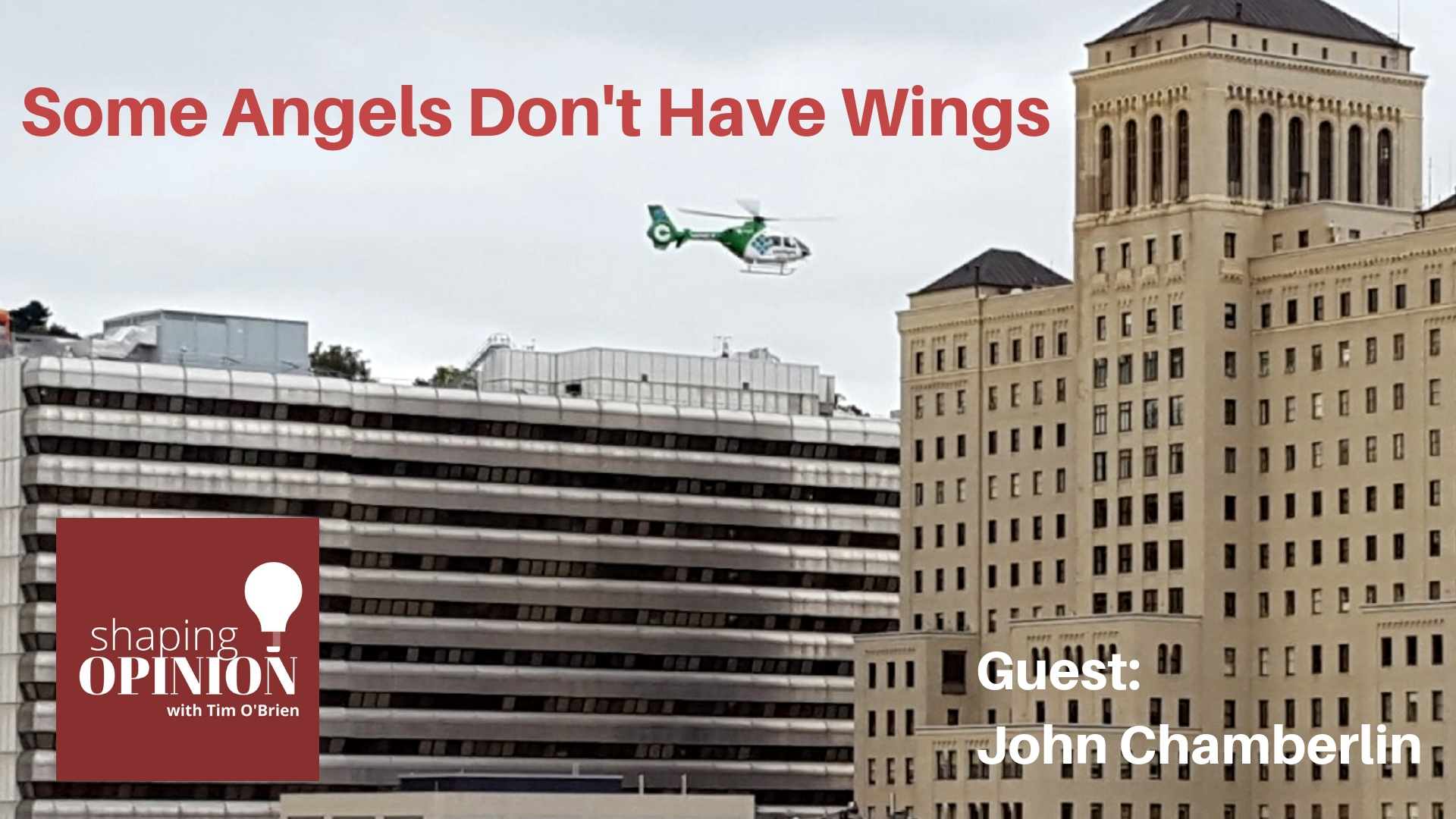John Chamberlin joins Tim to talk about something we may take for granted, that is until we need it. It’s the story behind those helicopters that swoop in to take critically injured or sick people to the hospital care needed to save their lives. John is a co-host at the popular Pittsburgh podcast called YaJagoff, and over the years has served as an emergency medical responder. He remains an active advocate for that community. In short, this episode is about hope that didn’t exist before, all thanks to a wingless aircraft.

In this episode, we talk about how it wasn’t that long ago, that a health crisis too far away from a hospital meant a death sentence. But thanks to the deployment of helicopters nationwide, countless lives have been saved. In the process, this has changed the way we now think about our chances in some of the worst situations we can face in life.
The term “Medical evacuation” is often shortened to medevac, which is a term used to describe the transport and care provided to patients en route to a hospital or care center. The term is rooted in military terminology when describing moving wounded soldiers away from the battlefield.
There are two kinds of vehicles used in medevac situations. Ambulances and aircraft.
Air medical services have a very long tradition, rooted in battlefield deployments.
- In 1926, the U.S. Army Air Corps used a converted airplane to get patients from Nicaragua to an Army hospital in Panama 150 miles away.
- Planes were used to get wounded soldiers from one hospital to another in World War II.
- Helicopters made their medical debut during the Korean War in the 1950s. That was because the roads weren’t usable in Korea, so the military decided to use helicopters for the rapid and gentle evacuation of troops to field surgical units. Do you remember the TV show MASH?
- Over 22,000 troops were evacuated by helicopter during that war.
- In Vietnam, helicopters played a major role in the movement of wounded troops. Over 800,000 troops were evacuated from the field by helicopter.
- The advantages of helicopters are that they are quick, they could land and take off from almost anywhere, and medical personnel could start working on patients while in flight.
- By 1970, more and more military medical helicopter pilots had been discharged and returned to civilian life, often working in law enforcement or as first responders. Their influence helped lead to the creation of the Military Assistance to Safety & Traffic (MAST) program.
- That served as the catalyst for civilian programs.
- In 1972, St. Anthony’s Hospital in Denver became the first to have a civilian, hospital-based medical helicopter service in place.
- By 1980, the country had roughly 32 helicopter emergency medical service programs in operation, transporting over 17,000 patients a year.
- By 1990, those numbers grew to 174 services that transported 160,000 patients a year.
- In 2000, 231 services flew over 203,000 patients each year.
- Today, there are over 500,000 medical transports by air each year.
Facts
- An average response time to the scene of a trauma is about 10 minutes.
- There are 9% fewer wound infections.
- A major reduction in the number of deaths during transport to the hospital.
- Head injury mortality has been reduced by 15%.
Links
- YaJagoff – Pittsburgh Podcast
- Modern EMS Practices have their Roots in Vietnam Medical Rescues, The American Home Front Project
- The History of Air Medical and Air Ambulance Services in the United States, Air Ambulance Guides
About this Episode’s Guest John Chamberlin
 John Chamberlin, co-host of the Pittsburgh-based, lighthearted YaJagoff Podcast. John has been involved in EMS (Emergency Medical Services) as a provider and as an administrator since 1985. His experience includes time as a provider and administrator in the air medical industry, specifically, helicopter EMS systems.
John Chamberlin, co-host of the Pittsburgh-based, lighthearted YaJagoff Podcast. John has been involved in EMS (Emergency Medical Services) as a provider and as an administrator since 1985. His experience includes time as a provider and administrator in the air medical industry, specifically, helicopter EMS systems.


